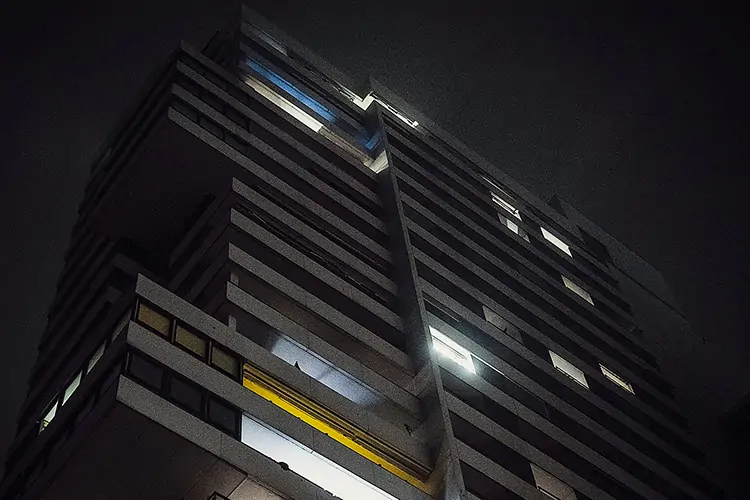What’s the problem with block lighting? Jamie Willsdon takes a closer look.
Picture the scene – a new development is ready for sale and one of the first prospective buyers turns up in the evening to view. It’s an impressive sight; everything is brand new and the areas around the common walkways and drive glitter with lights, bathing everything in a comforting and reassuring glow. A well-appointed block of flats has been completed and is ready for new residents. But come back a year later, and things are very different. Many of the lights have stopped working, giving the outside of the block an uncared for look. So what’s gone wrong? How has there been such wholesale lighting failure so soon after completion?
Costly mistakes
One site we visited recently was a stunning development with a central road running through the site. Standard domestic bollard lighting had been installed to the edge of the curb all the way down the single-carriage road at bumper height. With limited space to manoeuvre, delivery trucks and other vehicles visiting the development regularly hit the bollards and either damaged them or flattened them completely. Not a single light remained operational.
The solution to this problem came at a cost to residents. The lighting was disconnected, removed and taken off the road where it had proved so vulnerable and was mounted on the buildings instead. The new installation with its five-year guarantee went a long way to making the apartment owners happy with the results achieved – but the lack of forethought and feasibility planning at the initial building stage had proved expensive.
Lights on – but nobody’s home
Another huge apartment complex built in the last five years, standard circular fluorescent ceiling lights had been installed throughout the communal areas but without controls, which
meant they were permanently switched on. The building was beautifully constructed, with extensive glazed walkways and staircases, flooded with natural light. However, the solar gain produced inside the glazed stairwells had overheated the permanently-lit lights and over a short time span they had burnt themselves out. In a new build development, there is no excuse for such errors in specification leading, in turn, to poor levels of energy efficiency.
After endless ongoing electrical repairs and maintenance calls to repair the failing lights, all the units had to be replaced and the existing wiring was used to retro-fit new lights with controls that turned on and off. Problem solved – but the solution proved costly: every apartment in the complex was landed with a hefty bill. However the upside for residents was that the energy saved by simply using photocells and occupancy detectors to make the most of the natural light meant it wasn’t long before the block began seeing a return on its investment.
These are just a couple of many similar scenarios. Too often in new developments lighting is specified that looks good for a few months but isn’t fit for purpose. So what can be done? The answer is in the hands of developers and their architects. By identifying lighting consultants at feasibility stage who have experience in maintaining block lighting – before design and installation begin – many of the problems faced by property managers and their residents could be eradicated. Vast quantities of money and energy could be saved and the lighting that looked so enticing on that first evening’s viewing would look the same years later.
Do you have a project we could help with?
Get in touch: info@future-group.uk
T: 020 3826 9999
12/04/2016
